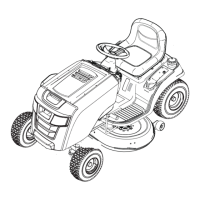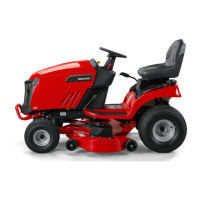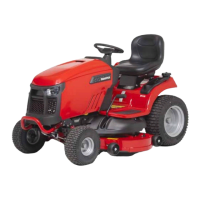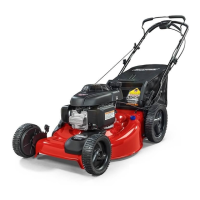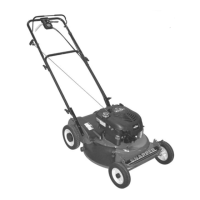Why does my Snapper Lawn Mower engine knock?
- JJeremy RiveraSep 13, 2025
Your Snapper Lawn Mower engine may be knocking due to: * Low oil level. Check and add oil as required. * Using the wrong grade of oil. See Oil Recommendations Chart.
Why does my Snapper Lawn Mower engine knock?
Your Snapper Lawn Mower engine may be knocking due to: * Low oil level. Check and add oil as required. * Using the wrong grade of oil. See Oil Recommendations Chart.
| Engine | Briggs & Stratton |
|---|---|
| Engine Type | 4-Cycle OHV |
| Engine Displacement | 163 cc |
| Cutting Width | 21 in |
| Drive System | Rear-wheel drive |
| Cutting Height | 1.25 to 3.75 inches |
| Fuel Tank Capacity | 1.5 quarts |
Contains important instructions for initial setup, operation, and maintenance.
Explains hazard symbols and signal words like DANGER, WARNING, CAUTION.
Lists rules for safe operation, including blade hazards and object throwing.
Provides guidelines for safely transporting and storing the unit.
Details risks associated with operating on slopes, including loss of control and tip-overs.
Addresses the risks of children being attracted to the unit and how to ensure their safety.
Provides instructions for towing equipment safely with the unit.
Essential safety precautions for handling gasoline and fuels.
Covers general maintenance tasks, safety device checks, and repair precautions.
Identifies the location and meaning of various safety decals on the unit.
Explains the meaning of safety icons used in the manual.
Details the function of various controls like brake, cruise, fuel, speed, lights, height, PTO.
Explains how to activate and use the Reverse Mowing Option.
Describes the ignition switch positions and throttle/choke control operation.
Reminds users to read safety sections and perform interlock tests.
Outlines critical safety tests to ensure the unit operates safely.
Guidance on maintaining proper tire pressure and selecting the correct engine oil.
Step-by-step instructions for checking and adding engine oil.
Explains what to do if low oil pressure is detected.
Specifies acceptable fuel types, octane ratings, and high altitude adjustments.
Crucial safety warnings and procedures for refueling the unit.
Step-by-step guide to starting the engine, including safety precautions.
Instructions for normal and emergency shutdown of the tractor and engine.
Explains how to operate the tractor's driving controls.
Guide to setting cutting height and starting the mowing process.
How to engage/disengage parking brake and cruise control.
Adjusting mower height and using the hourmeter/clock features.
Procedures for pushing the tractor by hand and using the RMO feature.
Schedule of maintenance tasks for the tractor and mower.
Schedule of maintenance tasks for the engine.
Guidance on checking tire pressure and mower blade stopping time.
Step-by-step instructions for cleaning the battery and its connections.
Procedures for replacing the battery, including charging advice.
Detailed steps for draining and replacing engine oil, including filter.
Instructions for cleaning or replacing the air filter and pre-cleaner.
Checking, adjusting, cleaning, and installing spark plugs.
Warnings about hot surfaces and procedures for muffler servicing.
Warnings and guidelines for storing the unit safely, especially with fuel.
Steps for preparing equipment for storage and maintaining the fuel system.
Recommends changing oil while warm and performing checks after storage.
Lists common starting problems and their remedies.
Addresses hard starting, poor running, knocking, and exhaust issues.
Solutions for issues like tractor not driving or poor steering.
Troubleshooting for uneven or rough mower cuts.
Solutions for engine stalling and the mower not driving.
Provides technical data for cylinder, displacement, electrical system, and oil capacity.
Details fuel tank capacity, spark plug specs, and air/valve clearances.
Explains power rating methodology and directs users to dealers for parts.
